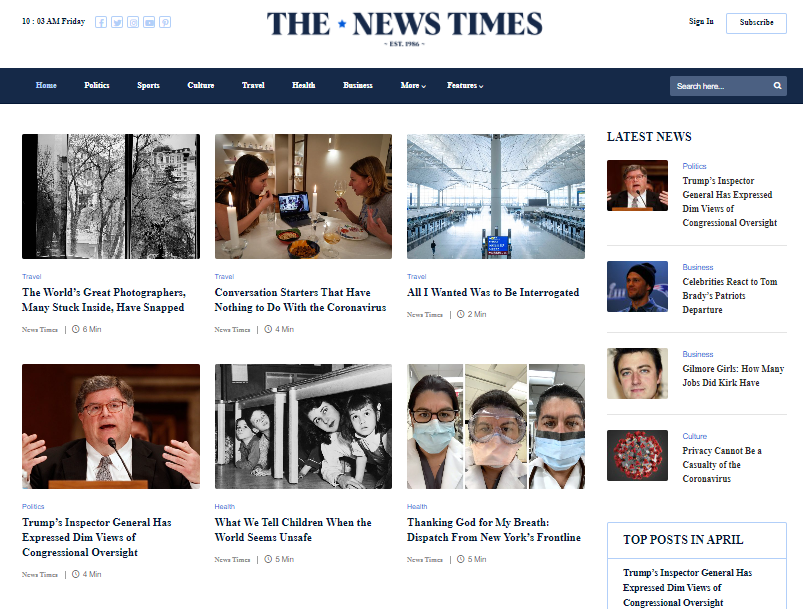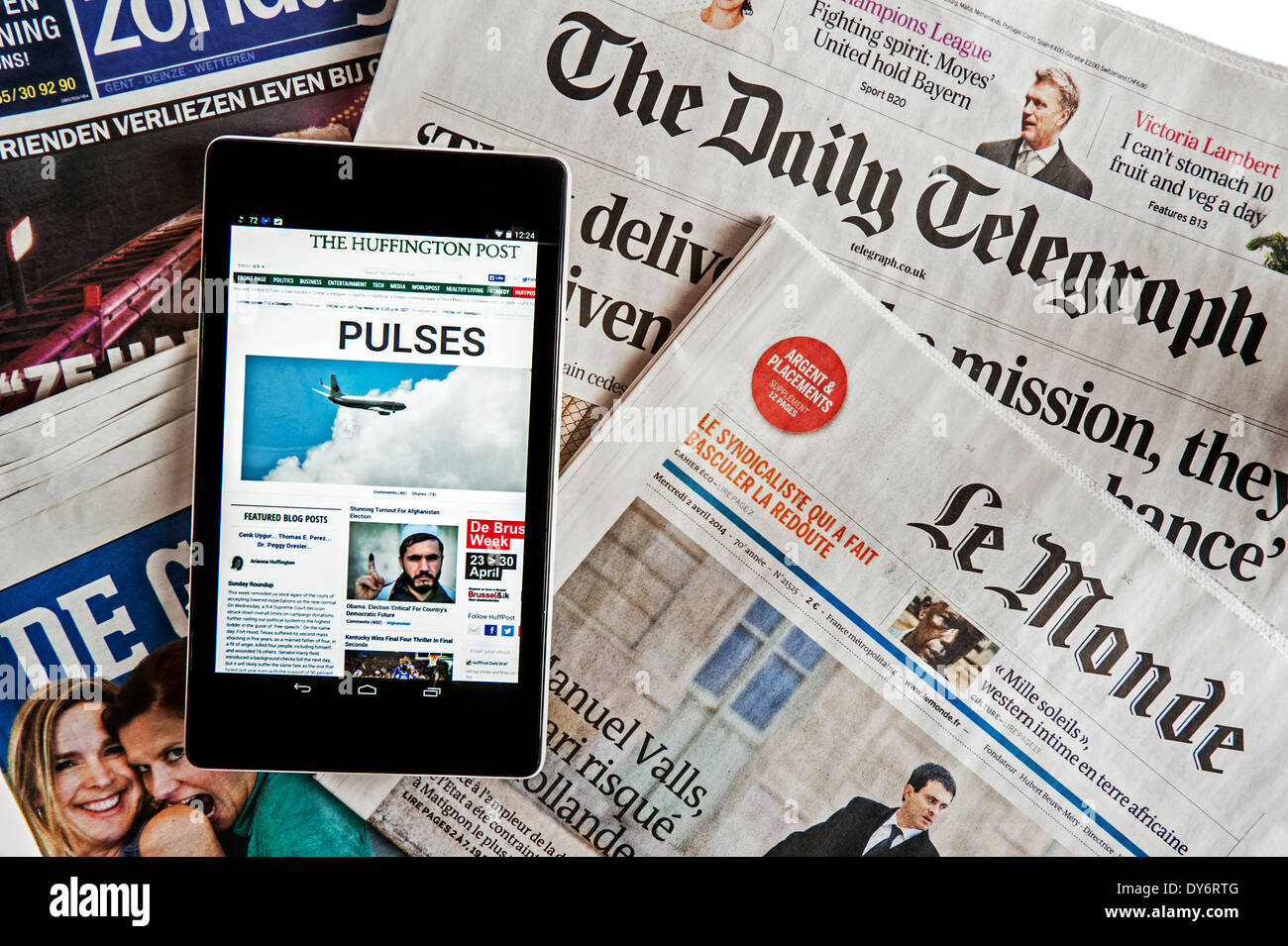The Influence of Social Media Site on the Method We Consume News Online
Social media has essentially changed news intake. It supplies instant accessibility to details, often overshadowing typical media electrical outlets. This fast circulation comes with challenges. Individuals deal with the threat of coming across false information and ending up being caught in echo chambers. The algorithms driving customized web content can obscure varied perspectives. As these dynamics evolve, understanding their ramifications ends up being vital for notified engagement in public discussion. What strategies might help navigate this facility landscape?
The Evolution of News Intake in the Digital Age
As technology advanced, the means people eaten news changed considerably in the electronic age (stnews.live). Typical newspapers and broadcast media began to decline as the internet became a primary source of information. On-line systems provided instantaneous accessibility to newspaper article, video clips, and podcasts, enabling users to stay notified any time. The comfort of smart phones even more increased this shift, enabling individuals to get updates on the go
Furthermore, the surge of news collectors and internet sites facilitated the consumption of varied viewpoints, equipping users to tailor their news consumption based upon personal rate of interests. This advancement additionally motivated wire service to adapt their techniques, concentrating on electronic web content and engaging visitors with multimedia styles. Because of this, the traditional barriers of time and room in news delivery decreased, bring about an extra immediate and individualized news experience for target markets worldwide.
The Function of Social Media Site Platforms in News Circulation
Social media platforms have changed news circulation by providing instant access to info. Their algorithm-driven material curation often prioritizes involvement over precision, leading to significant credibility obstacles (stnews.live). As individuals navigate this landscape, the ramifications for news consumption and public discourse become increasingly intricate
Instant News Access
Although typical news outlets have long been the primary resource of details, the rise of social media sites platforms has actually dramatically transformed exactly how news is accessed and consumed. Instant news accessibility has become a hallmark of the electronic age, allowing users to obtain updates in genuine time. Systems such as Twitter, Facebook, and Instagram allow news to spread out swiftly, typically going beyond conventional media in speed and reach. Users can share tales, remark on events, and involve with reporters, developing a vibrant communication between the target market and news material. This immediacy cultivates a culture of urgency, prompting customers to inquire swiftly. The expectation for prompt news has reshaped journalistic methods, engaging news organizations to adjust their strategies to satisfy the needs of a fast-paced electronic setting.
Algorithm-Driven Material
While individuals actively engage with content on social media sites, the algorithms that regulate these platforms play a crucial duty in identifying which news tales acquire presence. These formulas evaluate customer habits, choices, and involvement metrics to curate customized news feeds. As an outcome, particular stories might be intensified while others continue to be unknown, usually prioritizing spectacular or trending subjects over substantive reporting. This careful direct exposure forms customers' perceptions of existing occasions and affects public discussion. The reliance on algorithm-driven content can create echo chambers, where users are mainly exposed to perspectives that align with their own ideas. The dynamics of news circulation on social media systems significantly influence how people take in and interpret details in the digital age.
Trustworthiness Difficulties
As users significantly transform to social media for news, the reputation of details experienced on these systems ends up being a pushing worry. The decentralized nature of social media permits anybody to release material, often obscuring the lines between trustworthy journalism and misinformation. Formulas focus on engagement over precision, resulting in the widespread circulation of mind-blowing or misleading tales. This setting positions substantial challenges for customers trying to determine credible sources. Social network platforms, while seeking to battle misinformation with fact-checking and material small amounts, face objection for variances and prejudices in their approaches. Eventually, the responsibility lies with customers to seriously assess the news they eat, as the rapid spread of information usually surpasses verification initiatives by platforms.
The Increase of Resident Journalism and User-Generated Content
The surge of person journalism has actually encouraged everyday individuals to share news and point of views, commonly supplying understandings that typical media might overlook. Nonetheless, this change additionally offers substantial obstacles, specifically the spread of false information that can emerge from unverified content. As user-generated web content ends up being much more common, the balance between genuine voices and precision in reporting stays a critical problem.
Equipping Everyday Voices

Obstacles of False information
While the rise of citizen journalism has opened up avenues for diverse voices in the media landscape, it has additionally introduced substantial challenges associated with misinformation. The ease of sharing information via social media platforms permits people to share news promptly, yet this fast spread typically comes with the expense of precision. User-generated web content regularly lacks the rigorous fact-checking and editorial oversight that standard journalism provides. Consequently, sensationalized or false narratives can get grip, misleading audiences and shaping public understanding (stnews.live). Additionally, the blending of viewpoint and fact within social networks complicates the distinction between qualified details and misinformation. As an outcome, customers need to navigate an increasingly intricate media setting, needing vital believing abilities to determine reputable news resources among the noise

Misinformation and Its Implications for Public Discussion
As social media sites systems progressively control the landscape of info circulation, the expansion of false information positions significant obstacles for public discourse. False information, typically created to deceive or provoke emotional responses, can distort assumptions of reality and threaten count on qualified sources. This sensation causes polarized viewpoints, as people move towards echo chambers that enhance their beliefs, even more entrenching departments within society.
The ramifications for public discussion are extensive. When people depend on false information, significant discussion diminishes, and the democratic process experiences. In addition, misinformation can incite concern and complication, influencing public health, safety, and political stability. Because of this, promoting media literacy becomes important, equipping individuals to critically assess information and recognize fact from fiction. Attending to the difficulties positioned by false information is essential for maintaining the integrity of public discussion and making certain a well-informed populace qualified of taking part in constructive conversations.
The Influence of Algorithms on News Presence
Offered the main function of algorithms in figuring out content exposure, their influence on news consumption is profound. These algorithms, made use of by view it social media sites systems, prioritize certain sorts of web content based upon user involvement and choices. Because of this, newspaper article that line up with popular fads or audience interests are most likely to be presented prominently, while much less mind-blowing tales may be overlooked. This develops an atmosphere where users are revealed largely to info that enhances their perspectives, potentially bring about resemble chambers.
Additionally, the continuous development of algorithms suggests that news organizations have to adapt their approaches to line up with these altering parameters, often focusing on clickbait or psychologically charged headings. The integrity of news reporting can be endangered, as critical Website stories might not obtain the exposure they should have. The mathematical shaping of news presence consequently plays an essential role in affecting public perception and understanding of current events.
The Shift Toward Aesthetic Narration in News Media
Significantly, news media is welcoming aesthetic storytelling as an effective device to engage audiences. This method leverages photos, video clips, infographics, and interactive components to communicate info much more effectively than standard text-based formats. As attention extends reduce, visuals provide a fast, impactful method to interact intricate stories and grab visitors' passion.
Systems like Instagram and TikTok have more increased this pattern, engaging news organizations to adjust their web content methods to fit these visually-driven atmospheres. By integrating compelling visuals, news outlets can enhance psychological links and foster higher understanding of topical concerns.
In addition, aesthetic narration permits more diverse stories, showcasing several point of views through dynamic presentations. As target markets significantly eat news with mobile devices, the change towards visuals not only accommodates individual preferences but additionally assists to break down obstacles to info access. Ultimately, this advancement shows a broader transformation in just how news is created and eaten in the electronic age.
Future Trends: Browsing the Altering Landscape of News Consumption
While the electronic landscape remains to evolve, news consumption is poised for substantial change driven by arising innovations and changing target market actions. As expert system and artificial intelligence advancement, individualized news feeds will come to be more common, permitting individuals to obtain content customized to their special info passions. This customization could result in better engagement however also increase worries concerning echo chambers and misinformation.
Moreover, the surge of voice-activated tools and smart audio speakers will influence exactly how news is provided, shifting the emphasis from visual to acoustic formats. This trend may encourage wire service to take on even more concise and appealing audio material.

Frequently Asked Inquiries
Just How Do Social Media Site Communications Affect News Integrity?
Social network interactions can greatly affect understandings of news reliability. Engagement metrics, such as likes and shares, frequently form target market count on, with popular blog posts acquiring perceived legitimacy, no matter the precision or reliability of the details provided.
What Duty Do Influencers Play in Shaping News Narratives?
Influencers considerably shape news stories by leveraging their systems to enhance certain tales, frequently customizing content to their target market. This can cause prejudiced viewpoints, affecting public assumption and prioritizing sensationalism over valid reporting.
How Can Users Identify Reliable News Sources on Social Media?
Individuals can determine dependable news sources on social networks by examining the resource's reputation, verifying facts via several outlets, reviewing the professionalism and trust of the content, and identifying prospective prejudices in reporting to assure exact details.
What Influence Does Social Media Site Have on Conventional Journalism Jobs?
Social media site greatly impacts typical journalism jobs by altering profits designs, minimizing demand for print media, and promoting competitors from person journalists. Subsequently, lots of specialists encounter job insecurity and should adapt to quickly transforming media landscapes.
Just How Do Various Demographics Consume News on Social Media Site?
Various demographics show diverse choices for news intake on social media. More youthful audiences favor platforms like TikTok and Instagram for quick updates, while older individuals often tend to favor Twitter and facebook for more in-depth discussions and write-ups.